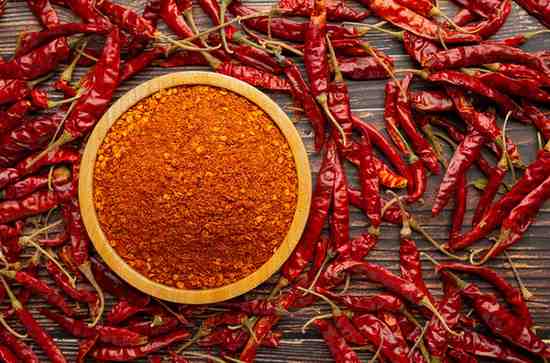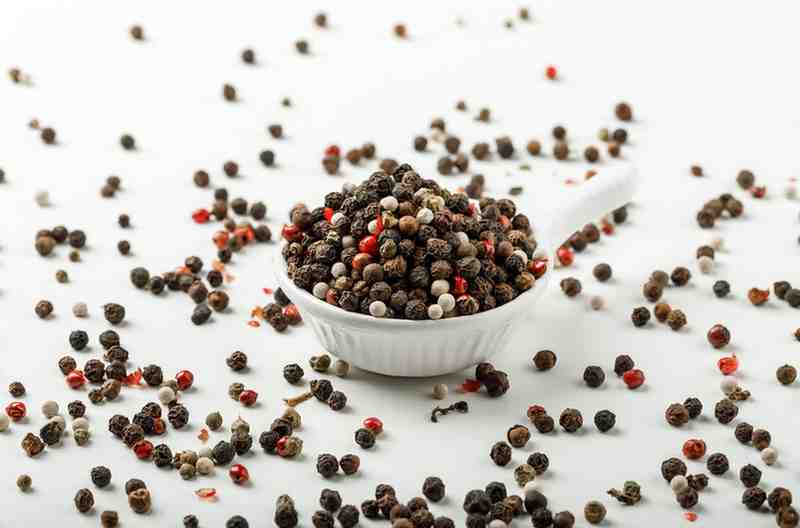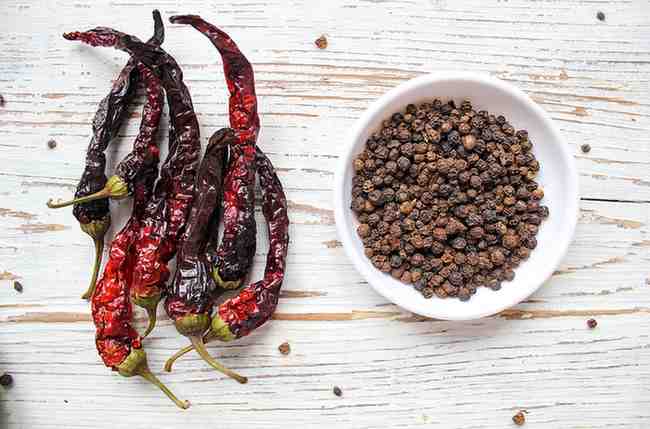Cajun seasoning is a bold, spicy blend that’s essential in Louisiana cooking. Known for its warm and rich flavor, this mix of spices brings depth to many dishes. Originally, the seasoning came from the Acadian people—French settlers who brought their rustic cooking style when they moved to Louisiana.
- Cultural Importance: More than just spices, Cajun seasoning reflects the spirit of Cajun culture, known for its simple, flavorful cooking.
- Versatile Flavor: This seasoning enhances traditional dishes like gumbo and jambalaya, yet it also adds a flavorful twist to everyday foods like grilled chicken or roasted vegetables.
By blending a handful of spices, Cajun seasoning captures the vibrant essence of Louisiana cuisine, delivering a taste of the South in every sprinkle.
Origins and Historical Background of Cajun Seasoning
The history of Cajun seasoning goes back to the 18th-century migration of Acadians to Louisiana. Forced to leave their homes in Canada, these settlers brought their cooking traditions to the bayous of Louisiana. Here, they adapted their recipes with local ingredients and flavors.
How Cajun Seasoning Developed
Cajun seasoning started as a simple way to add flavor to basic dishes. Over time, it developed into a signature blend of spices. Here’s how it grew:
- Resourceful Ingredients: The Acadians used local spices like cayenne and paprika to add warmth to their meals, creating the bold taste Cajun seasoning is now known for.
- Louisiana’s Influence: Common ingredients in Louisiana—such as garlic, onions, and peppers—added more flavor, creating a mix that’s both spicy and rich.
- Strong Flavors: Made to enhance foods cooked outdoors or in large pots, Cajun seasoning has a bold taste that stands up to grilling, frying, and stewing.
These influences shaped Cajun seasoning into a blend that brings depth and warmth to Louisiana’s unique dishes.

Cajun vs. Creole Seasoning: Key Differences
Though Cajun and Creole seasonings are similar, they each offer a distinct flavor. Here’s a quick look at what makes them different:
- Cajun Seasoning:
- Spicier, with fewer ingredients focused on peppery flavors.
- Typically uses more cayenne and black pepper to create heat.
- Has fewer herbs, giving it a straightforward and bold taste.
- Creole Seasoning:
- Milder and more aromatic, with added herbs.
- Contains thyme, basil, and oregano, which give it a layered and gentle flavor.
- Often used in dishes like shrimp creole and etouffee, which benefit from a softer, complex taste.
These differences highlight the unique styles of Cajun and Creole cooking, with Cajun seasoning providing a spicier, more intense flavor.
Core Ingredients of Cajun Seasoning and Their Roles
Cajun seasoning uses a few key spices to create its signature taste. Each ingredient brings a specific flavor that adds to the overall blend.
Key Ingredients in Cajun Seasoning
The main spices in Cajun seasoning are simple yet powerful. Here’s a look at what each spice adds:
- Paprika:
- Adds mild sweetness and a deep red color.
- Provides a gentle warmth that balances the hotter spices.
- Cayenne Pepper:
- The primary source of heat in Cajun seasoning.
- Delivers a spicy kick that you can adjust to taste.
- Garlic Powder:
- Adds a savory, rich flavor that complements other spices.
- Works well with onion powder, creating a solid base for the blend.
- Onion Powder:
- Adds a bit of sweetness and a mild, savory taste.
- Pairs with garlic to create a balanced, flavorful foundation.
- Black and White Pepper:
- Black pepper provides a sharp, bold heat, while white pepper brings a milder flavor.
- Together, they add layers of spice without overwhelming the other ingredients.

These spices form the heart of Cajun seasoning, making it adaptable to various recipes. Adjusting the amount of each spice allows you to control the heat and flavor.
Optional Ingredients and Variations
While the core spices are essential, you can also add extra ingredients to create a custom blend. Some popular additions include:
- Smoked Paprika: Brings a smoky flavor, perfect for grilling or roasting.
- Thyme and Oregano: Adds a gentle herbal note, softening the spiciness.
- Basil: Adds a touch of sweetness and freshness, creating a slightly different flavor.
These optional ingredients allow you to adjust Cajun seasoning for different dishes and preferences.
Tips for Making Cajun Seasoning at Home
Making Cajun seasoning at home is quick and gives you control over the flavor. Here are some tips to get the best results:
- Use Fresh Spices: Fresh, quality spices make a big difference in flavor. Look for spices that have rich color and a strong aroma.
- Adjust the Heat: Add more or less cayenne pepper based on your spice preference.
- Store Properly: Keep your Cajun seasoning in an airtight container, away from heat and light, to maintain its freshness.
Making Cajun seasoning at home also lets you avoid added salt, which is common in pre-made blends. This gives you complete control over the seasoning.
Traditional and Modern Culinary Uses of Cajun Seasoning
Cajun seasoning is a flexible spice blend that adds a warm, spicy kick to many dishes. It’s essential in Louisiana classics, but it can also elevate simple meals. Here are some of the best ways to use it.
Classic Cajun Dishes Featuring Cajun Seasoning
In Louisiana, Cajun seasoning is the heart of several beloved dishes. Let’s look at a few where it really stands out:
- Jambalaya: This filling, one-pot rice dish is full of shrimp, sausage, or chicken. The Cajun seasoning gives the rice and meat a spicy, warming flavor.
- Gumbo: Known for its rich broth and mix of seafood or meats, gumbo relies on Cajun seasoning to add deep, layered flavors and a bit of heat.
- Blackened Fish or Chicken: Meats like chicken or fish are coated in Cajun seasoning, then seared in a hot skillet. This method creates a flavorful, spicy crust that complements the dish.

Creative and Everyday Ways to Use Cajun Seasoning
Beyond classic dishes, Cajun seasoning can add Louisiana flair to everyday foods. Here are some quick ideas:
- Roasted Vegetables: Sprinkle Cajun seasoning on potatoes, carrots, or zucchini before roasting to give them a bold, savory taste.
- Spicy Popcorn: Toss Cajun seasoning on popcorn for a quick, flavorful snack with a little kick.
- Grilled or Roasted Meats: Use Cajun seasoning as a dry rub for chicken, pork, or beef to add a rich layer of flavor.
- Dips and Sauces: Mix Cajun seasoning into mayo, sour cream, or yogurt to make a tangy dip that pairs well with vegetables, fries, or chips.
These simple ideas make it easy to enjoy Cajun seasoning’s flavor in a variety of meals.
Health Benefits of Cajun Seasoning
In addition to boosting flavor, Cajun seasoning has health benefits thanks to its natural ingredients. Each spice brings nutrients that support well-being.
Key Health Benefits of Cajun Seasoning Ingredients
The spices in Cajun seasoning offer several benefits that can help digestion, immunity, and even inflammation.
- Paprika:
- Contains antioxidants like vitamin A, which supports eye and skin health.
- Has capsaicin, which may help reduce inflammation and support metabolism.
- Cayenne Pepper:
- Known for improving circulation and blood flow.
- Often linked to boosting metabolism, which can support weight management.
- Garlic Powder:
- Provides antibacterial and antiviral properties, supporting the immune system.
- Contains allicin, which may benefit heart health and blood pressure.
- Onion Powder:
- Rich in antioxidants that help protect cells.
- May assist with blood sugar control and support digestion.
Together, these spices make Cajun seasoning a flavorful and health-friendly addition to meals.
Using Cajun Seasoning as Part of a Balanced Diet
While Cajun seasoning has many benefits, it’s best to use it in moderation. Its bold flavors and heat can be strong, so pairing it with whole grains, lean proteins, and vegetables will help balance your meals.
Modern Applications and Fusion Recipes with Cajun Seasoning
These days, Cajun seasoning has found its way into kitchens around the world. Its warm, spicy profile blends well with other flavors, allowing for creative fusion dishes that offer a fresh take on classic recipes.
Innovative Ways to Use Cajun Seasoning
Adding Cajun seasoning to fusion recipes gives everyday ingredients an exciting twist. Here are a few fun ideas:
- Cajun-Spiced Tacos: Season fish or shrimp with Cajun seasoning before grilling, then serve in soft tortillas with avocado, slaw, and a squeeze of lime.
- Cajun Pasta: Stir Cajun seasoning into a creamy sauce for pasta, pairing it with shrimp or chicken for a rich, spicy dish.
- Cajun Stir-Fry: Toss veggies, chicken, or tofu with Cajun seasoning and a dash of soy sauce for a stir-fry that combines Southern and Asian flavors.
- Cajun Fries: Coat potato wedges with olive oil and Cajun seasoning, then bake or air fry until crispy for a flavorful side dish.
These modern recipes highlight Cajun seasoning’s versatility, making it a perfect choice for those who love experimenting in the kitchen.
Top Tips for a Successful Cajun Recipe
| Tips for a Successful Cajun Recipe | Notes for Enhancing Cajun Flavor |
|---|---|
| Use Fresh Spices | Fresh spices enhance aroma and flavor. Look for spices with vibrant color and a strong scent. |
| Adjust the Heat Level | Add or reduce cayenne pepper depending on your spice tolerance. Customize to taste! |
| Balance with Herbs | Try adding herbs like thyme, oregano, or basil for a softer flavor that complements spiciness. |
| Pair with Traditional Ingredients | Ingredients like garlic, onions, and bell peppers blend well with Cajun seasoning. |
| Use a Cast Iron Pan for Blackening | For blackened recipes, use a cast iron skillet. It heats evenly and adds a smoky, charred flavor. |
| Add Cajun Seasoning Early in Cooking | Allow Cajun seasoning to cook with the dish for full flavor integration. This is especially effective in stews and soups. |
| Experiment with Fusion Dishes | Use Cajun seasoning creatively in tacos, pasta, or stir-fries for a modern twist. |
| Store Properly | Keep Cajun seasoning in an airtight container away from heat and light to maintain freshness. |
FAQs about Cajun Seasoning
What spices are typically found in Cajun seasoning?
- The base spices in Cajun seasoning include paprika, cayenne pepper, garlic powder, onion powder, and black and white pepper. Some blends may add herbs like thyme or oregano.
Is Cajun seasoning spicy?
- Yes, Cajun seasoning usually has a moderate to high level of heat, mostly from cayenne pepper. The spice level can vary, and homemade blends can be adjusted to taste.
How is Cajun seasoning different from Creole seasoning?
- Cajun seasoning is spicier and more pepper-focused, while Creole seasoning includes additional herbs, giving it a milder, more aromatic flavor.
Can I make my own Cajun seasoning at home?
- Absolutely! Combining spices like paprika, cayenne, garlic, and onion powders allows you to customize the blend based on your taste.
What are some easy ways to use Cajun seasoning in cooking?
- Cajun seasoning is versatile and can be used in roasted vegetables, grilled meats, popcorn, soups, and dips for extra flavor.

